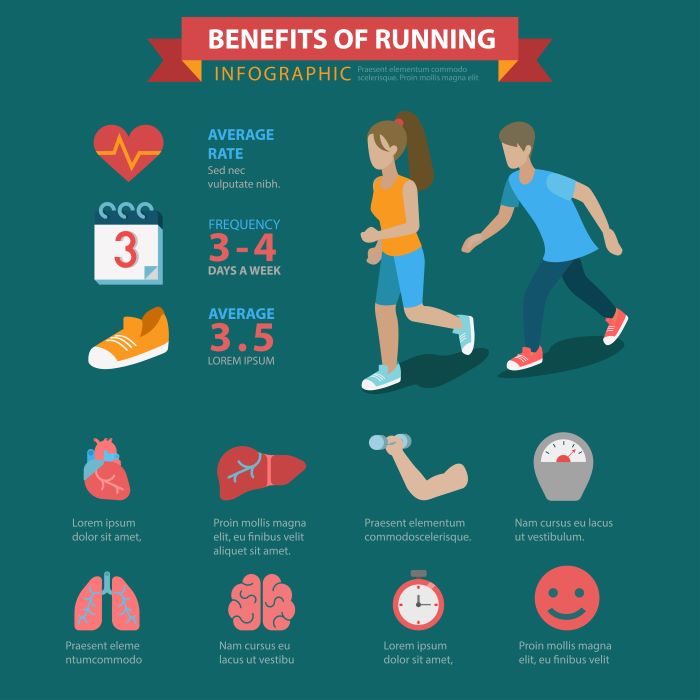For runners looking to enhance their performance and prevent injuries, cross training emerges as a vital component of a well-rounded fitness regimen. Engaging in various forms of exercise not only helps to strengthen muscles that aren’t typically utilized during running but also provides a refreshing break from the monotony of pounding the pavement.
Incorporating cross training can yield several benefits:
- Injury Prevention: By varying workouts, runners can reduce the risk of overuse injuries that often occur from repetitive motions.
- Muscle Balance: Different activities work different muscle groups, promoting overall strength and balance, which is crucial for maintaining proper running form.
- Cardiovascular Improvement: Engaging in cycling, swimming, or rowing can enhance cardiovascular endurance without the stress of running.
- Increased Flexibility: Activities like yoga or Pilates improve flexibility, which can enhance running efficiency and recovery.
Moreover, cross training can keep motivation high, as trying new activities can reignite the passion for fitness. Runners can explore various workouts that align with their interests and goals, leading to a more enjoyable fitness journey.
To truly optimize your running routine and embrace the essential benefits of cross training, visit our website to learn more and get started today! Click here.
Key Strength Training Exercises for Runners
.jpg)
Strength training is a crucial element for runners aiming to improve their speed, endurance, and overall performance. By targeting specific muscle groups, runners can enhance their power, support their joints, and improve their running form. Here are some key strength training exercises tailored for runners:
- Squats: This compound exercise targets the quadriceps, hamstrings, and glutes, providing a solid foundation for powerful strides.
- Lunges: Forward and reverse lunges enhance leg strength and stability while also engaging the core, which is essential for maintaining good posture while running.
- Deadlifts: Focusing on the posterior chain, deadlifts strengthen the lower back, glutes, and hamstrings, which are vital for preventing injuries and improving running efficiency.
- Planks: Core strength is critical for runners, and planks help strengthen the abdominals, obliques, and lower back, contributing to better overall stability.
- Calf Raises: Strong calves are necessary for effective push-off during running; calf raises help to build this essential strength.
Integrating these exercises into a weekly workout routine can significantly boost running performance. Aiming for two to three strength training sessions per week allows for adequate recovery while maximizing strength gains. By focusing on these key exercises, runners can build a solid physical foundation that translates to improved running efficiency and reduced risk of injury.
The Role of Flexibility in Running Performance
Flexibility plays a vital role in enhancing running performance and preventing injuries. As runners, maintaining a good range of motion in the muscles and joints is essential for optimal movement efficiency. Here’s how flexibility contributes to better running:
- Improved Range of Motion: Flexible muscles and joints allow for a greater range of motion, which can enhance stride length and overall running efficiency. This means runners can cover more ground with each step, leading to improved speed.
- Injury Prevention: Tight muscles can lead to imbalances and strain, increasing the risk of injuries like shin splints, tendonitis, and muscle pulls. Regular flexibility training helps to alleviate muscle tightness and promotes proper alignment.
- Better Posture: Flexibility exercises, particularly those targeting the hips, lower back, and shoulders, promote better posture while running. Good posture not only improves breathing but also helps distribute impact forces more evenly across the body.
- Enhanced Recovery: Incorporating flexibility work, such as stretching or yoga, into a post-run routine helps to relax the muscles and aids in recovery. This can reduce soreness and improve overall performance in subsequent runs.
To enhance flexibility, runners should consider incorporating dynamic stretches before their runs and static stretches afterward. A consistent flexibility routine not only complements strength training but also contributes to a well-rounded approach to fitness. By embracing flexibility, runners can unlock their full potential and enjoy a more fulfilling running experience.
Incorporating Speed Workouts into Your Routine

Incorporating speed workouts into your running routine is essential for boosting your overall performance. These workouts help to improve your pace, endurance, and efficiency, making you a better runner. Here are some effective strategies for including speed workouts in your training plan:
- Interval Training: This involves alternating between periods of high intensity and recovery. For example, sprint for 30 seconds, then jog or walk for 1-2 minutes. Repeat this cycle several times. Interval training enhances your cardiovascular fitness and builds speed.
- Tempo Runs: A tempo run is a sustained effort run at a challenging but manageable pace. This type of workout helps improve your lactate threshold, allowing you to run faster for longer periods. Start with 10-15 minutes at a comfortably hard pace and gradually increase the duration.
- Fartlek Training: Fartlek, which means ‘speed play’ in Swedish, combines continuous running with intervals of faster running. For instance, during a 30-minute run, you can sprint for 1 minute every 5 minutes. This method is flexible and can be tailored to fit your fitness level.
- Hill Repeats: Running hills builds strength and power in your legs, leading to faster flat running. Find a hill that takes about 30 seconds to run up, sprint to the top, and jog back down for recovery. Repeat this several times.
When adding speed workouts to your routine, it’s crucial to listen to your body and allow ample recovery time. Incorporate these workouts once or twice a week, ensuring you maintain a balance with your longer, slower runs. By systematically integrating speed training, you’ll see significant improvements in your running performance.
Essential Recovery Techniques for Runners

Recovery is a vital component of any runner’s training regimen. It allows your muscles to heal, rebuild, and prepare for the next workout. Implementing essential recovery techniques can significantly enhance your performance and prevent injuries. Here are some effective strategies:
- Active Recovery: Engaging in low-intensity activities like walking, cycling, or swimming on rest days promotes blood flow without putting too much strain on your muscles. This helps to flush out lactic acid and reduce soreness.
- Stretching and Flexibility: Incorporate static and dynamic stretching into your routine. Focus on major muscle groups such as hamstrings, quadriceps, and calves. Regular stretching improves flexibility, reduces muscle tightness, and enhances overall mobility.
- Foam Rolling: Using a foam roller can help alleviate muscle tightness and improve circulation. Spend a few minutes rolling out your legs, back, and other tight areas after your runs to facilitate quicker recovery.
- Hydration and Nutrition: Proper hydration is essential for recovery. Drink water and consume electrolyte-rich fluids post-workout. Additionally, focus on a balanced diet rich in proteins, healthy fats, and carbohydrates to replenish glycogen stores and repair muscle tissue.
- Rest and Sleep: Never underestimate the power of a good night’s sleep. Aim for 7-9 hours of quality sleep each night to promote muscle recovery and mental sharpness. Consider incorporating rest days into your training schedule to allow your body adequate time to recover.
By prioritizing these recovery techniques, you can enhance your performance, reduce the risk of injuries, and ensure that you’re ready to tackle your next running challenge.
Building a Balanced Workout Plan for Running Success

Creating a balanced workout plan is essential for achieving running success. A well-structured routine not only enhances your running performance but also helps to build strength, improve flexibility, and prevent injuries. Here’s how to develop a comprehensive workout plan:
- Set Clear Goals: Determine what you want to achieve with your running—whether it’s improving your speed, increasing endurance, or preparing for a race. Having clear objectives will guide your training decisions.
- Incorporate Variety: A balanced plan should include various workout types, such as:
- Long Runs: Enhance endurance by gradually increasing your distance each week.
- Speed Work: Integrate intervals or tempo runs to boost your pace and running efficiency.
- Strength Training: Focus on exercises that target key muscle groups, including squats, lunges, and core workouts to improve overall strength.
- Flexibility and Mobility: Dedicate time for stretching and mobility exercises to maintain flexibility and prevent injuries.
- Plan Recovery: Schedule rest days and active recovery sessions, such as yoga or light swimming, to allow your body to recuperate and adapt.
- Monitor Progress: Keep track of your workouts, noting improvements in speed, distance, and overall fitness. Adjust your plan as needed based on your progress and how your body feels.
By following these steps, you can create a balanced workout plan that aligns with your running goals. Visit our website to learn more and get started today! Click here.


